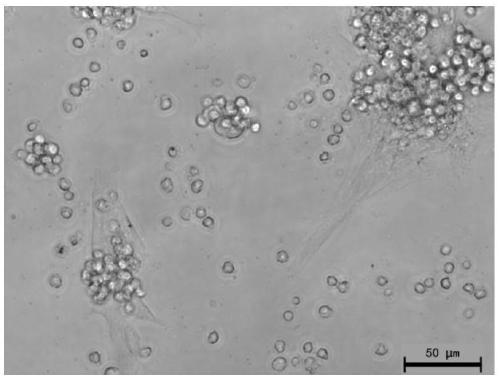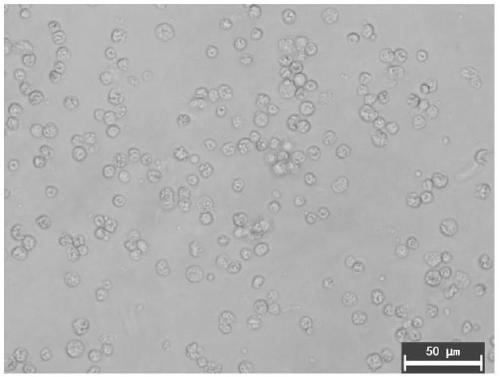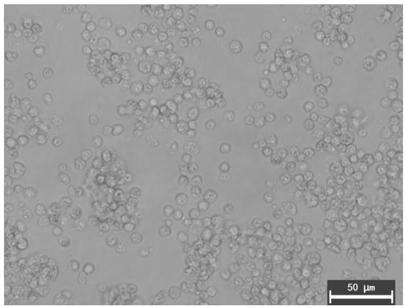Separating and culturing method for feeder-layer-free rat spermatogonial stem cells
A spermatogonial stem cell, feeder-free technology, applied in the direction of germ cells, animal cells, vertebrate cells, etc., can solve the problems of increased cost of cultured cells, high cost of separation, high requirements for medium nutritional conditions and ion stability, etc. Achieve the effect of saving the cost of cell culture and the method of separation and culture is simple
- Summary
- Abstract
- Description
- Claims
- Application Information
AI Technical Summary
Problems solved by technology
Method used
Image
Examples
Embodiment Construction
[0018] Introduce real-time example and experimental determination of the present invention in detail below:
[0019] A method for isolating and culturing rat spermatogonial stem cells without a feeder layer, comprising the following steps:
[0020] Step 1. Separation of primary rat spermatogonial stem cells: Separation of spermatogonial stem cells from the testes of male rat suckling rats 7-9 days after birth, and obtaining rat spermatogonial stem cells through differential adherence and percoll separation, specifically:
[0021] Take 7-9 day old WISTAR male rats, dissect the testicular tunica, separate and expose the seminiferous tubules, add 4ml of HBSS dissolved in 10μg / ml type IV collagenase, place at 37°C for 15 minutes, shake gently every 5 minutes Mix well to speed up digestion. Then use 3ml volume of 300μg / ml DNAse to wash 2-4 times, centrifuge at 600g for 5 minutes, then add 4ml of 0.25% trypsin containing 1mM EDTA to digest gently at 37°C for 5 minutes. 10% serum t...
PUM
 Login to View More
Login to View More Abstract
Description
Claims
Application Information
 Login to View More
Login to View More - R&D
- Intellectual Property
- Life Sciences
- Materials
- Tech Scout
- Unparalleled Data Quality
- Higher Quality Content
- 60% Fewer Hallucinations
Browse by: Latest US Patents, China's latest patents, Technical Efficacy Thesaurus, Application Domain, Technology Topic, Popular Technical Reports.
© 2025 PatSnap. All rights reserved.Legal|Privacy policy|Modern Slavery Act Transparency Statement|Sitemap|About US| Contact US: help@patsnap.com



